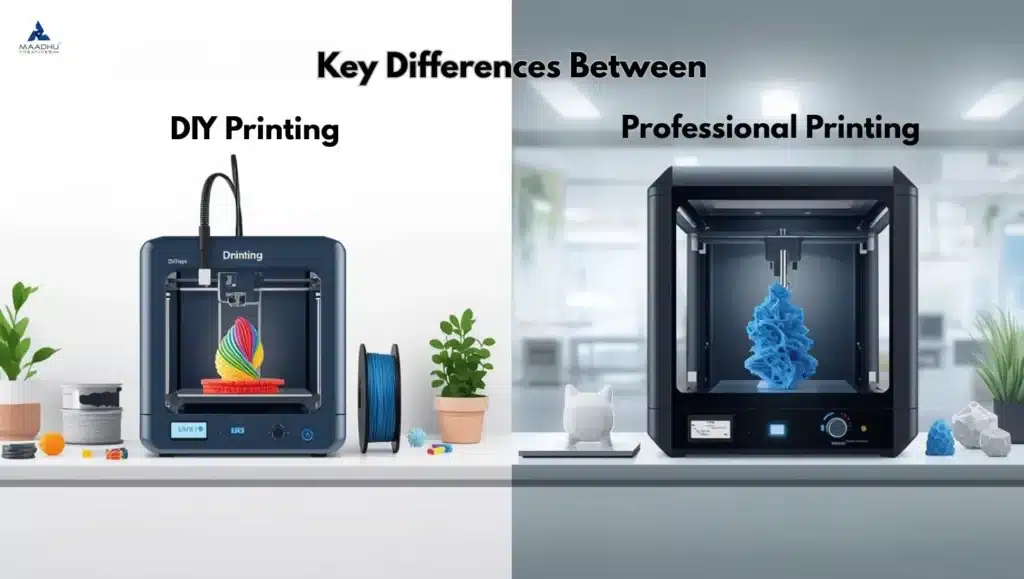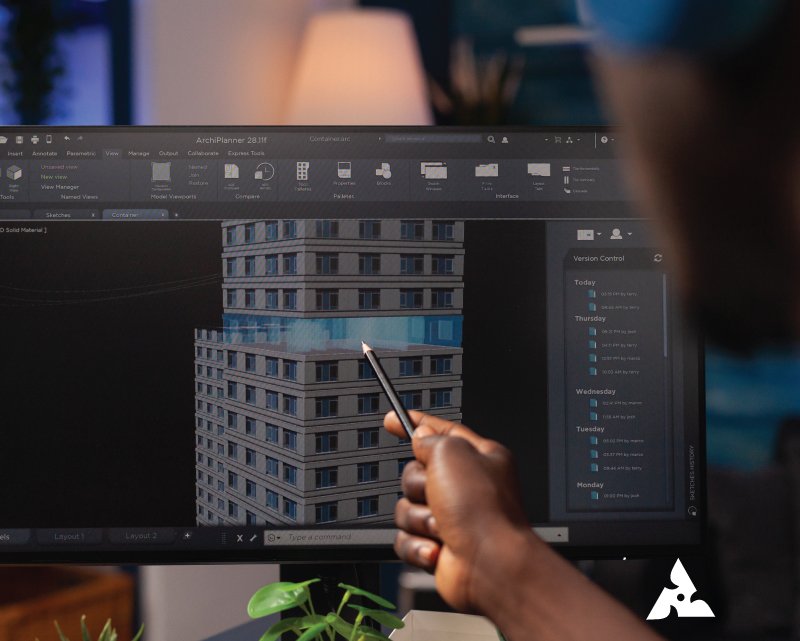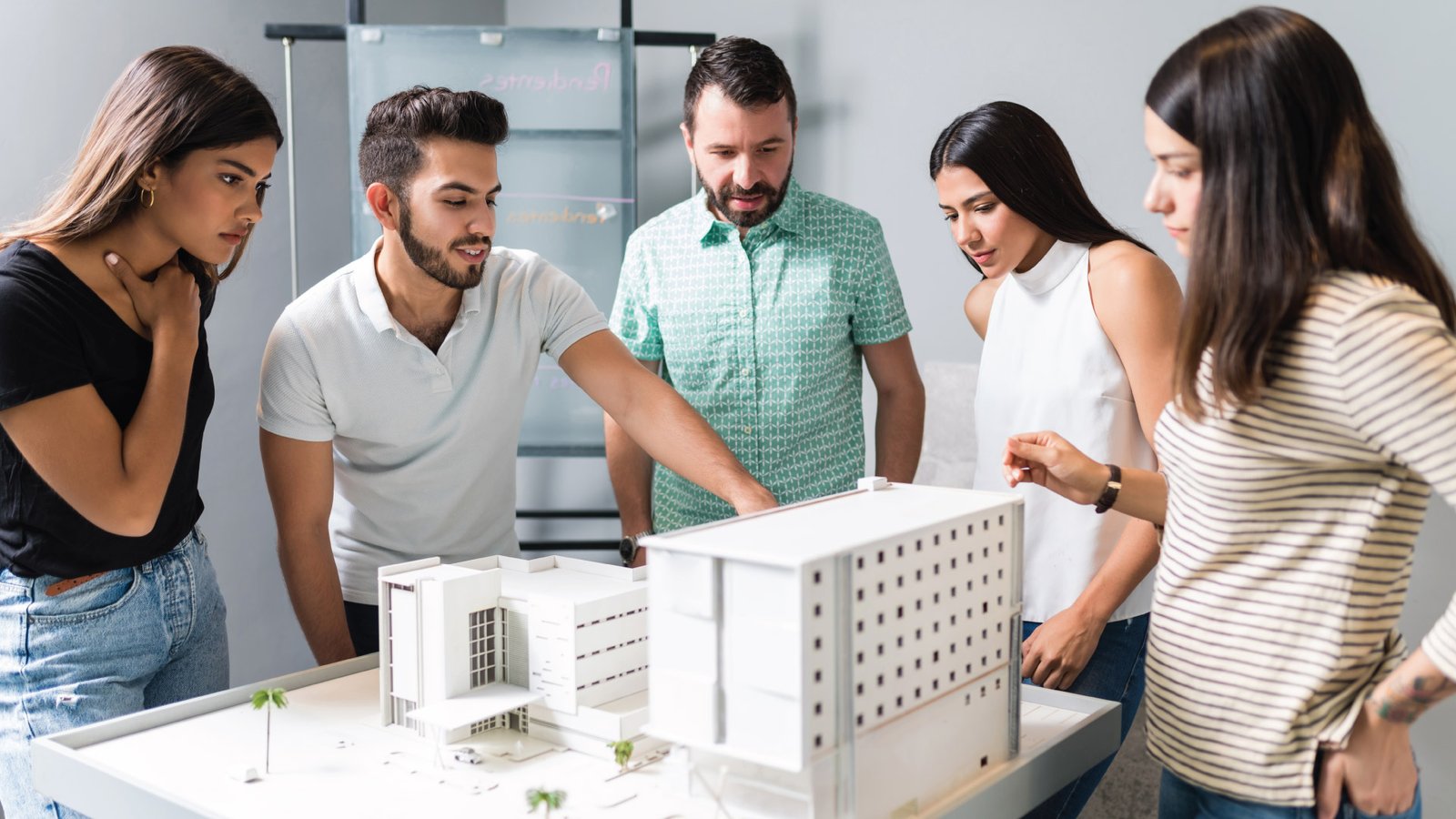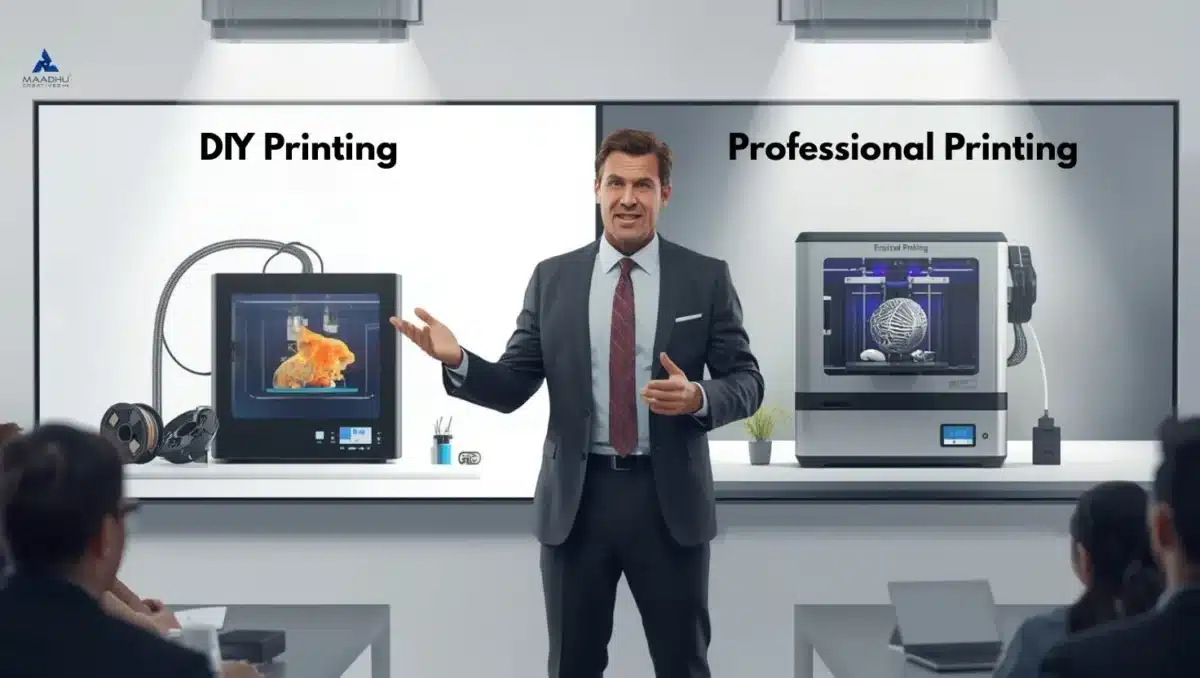DIY Printing vs Professional Printing: Which One Should You Choose?
Table of Contents
Introduction
In the last ten years, 3D printing has evolved from a niche hobby into a highly powerful, attainable tool that industries around the world have relied upon. Machines that create physical objects layer by layer, once thought to be futuristic, are now available for a professional or everyday user alike to readily access. Whether an architect designing a scale model or a student printing prototypes at home, the landscape of 3D printing has changed tremendously in a short period of time.
With this change comes the important question: Should you pursue 3D printing on your own with a DIY solution, or should you hire a professional 3D printing model maker?
The answer is based on your goals, the budget you are willing to use, and the quality you expect. But before we dig into the pros and cons, let’s look at a brief history of 3D printing.
A Brief History of 3D Printing
3D printing originated in the 1980s with the invention of stereolithography (SLA), which was the first additive manufacturing process. Now there are other processes like fused deposition modeling (FDM) and selective laser sintering (SLS), which have increased 3D printing capabilities.
In the 2000s, 3D printing was primarily just used for rapid prototyping in the automotive and aerospace industries due to the machine price being very high and only reserved for companies with lots of money.
In the 2010s, smaller and affordable 3D printers for DIY 3D printing became available. Today, home users and entrepreneurs can buy the best 3D printer for beginners and begin to experiment. Meanwhile, professional 3D printing companies have innovated with better materials, faster machines, and highly accurate machines to serve industries where accuracy counts.
What is DIY 3D Printing?
DIY 3D printing entails the use of a low-cost, personal desktop printer to produce models at home, in schools, or in small shop environments. It is enjoyed by hobbyists and students alike because it allows users to experiment with some designs, develop models, and see the models come to life without needing to rely on service providers.
Many individuals will purchase an entry-level printer sold as the best 3D printer, or a printer that is the best 3D printer for beginners. DIY printing is rewarding because it allows users total personal control of the process, and provides them with learning opportunities in regards to 3D design for 3D printing.
However, DIY printing has its challenges, such as limited materials, reduced accuracy of your designs, and the need to do the trial and error process over and over.
What is Professional 3D Printing?
Professional 3D printing is done by experts who do 3D printing services, custom 3D printing, and additive manufacturing. A 3D printing model maker uses professional machines, industrial-grade software, and all types of materials to make precise model parts for industries such as architecture, product design, healthcare, and engineering.
Professional services have:
- Quality materials: Resin, nylon, composites, and even metals.
- Expert Design: Improved 3D Models to Reduce Errors.
- Finishing services: Polishing, painting, and assembling for professional results.
- Rapid prototyping: Fast turnaround times for business or industrial needs.
This makes professional printing the go-to choice for clients who need flawless results.
Key Differences Between DIY Printing and Professional Printing

Quality and Precision
Models created with DIY printers often display visible layer lines and may not be objectively accurate. High-quality professional printers will deliver a smooth finish on parts with high levels of detail, or true dimensional accuracy if required.
Materials and Choices
Usually, options for DIY printing are limited to PLA and ABS plastics. Professional options will often include a wider catalog of options, which include flexible polymers, epoxy resins, metals, and composite choices.
Cost Considerations
Often, costs may seem lower when using DIY methods, but this option linearly accrues as prints fail, materials are wasted, and repairs to the printer may be needed as printing experience builds. Professional companies and individuals will charge a per-project cost and guarantee high-quality work each time.
Speed and Turnaround
DIY printing models often take longer because of the trial-and-error process in a less controlled setting. Professional printing companies tend to utilize techniques that have been made better over longer periods to produce rapid prototyping or faster production times for client work.
Design Expertise
The trouble with DIY project experience is that the user has to work through the design and project issues themselves, which are often complicated design issues. Professional 3D printing model makers work to help to ensure that designs are functional, optimized, and can be produced.
Finishing and Presentation
Overall, DIY models (and sometimes professional models) require sanding and painting by hand in order to push the models from the printer to a professional finished quality. Professional companies provide fully finished models that are ready for client reviews, exhibitions, or commercial use.
Pros of 3D Printing for DIY
- Great for education and experiential research into 3D printing technologies.
- It has a low start-up cost, depending on a desktop printer.
- Enjoys full creative control of the project.
- Can create small-scale, personal projects or prototypes.
Pros of Professional 3D Printing
- Models are created with high precision and accuracy.
- Variety of options with materials for either function or aesthetic, or both.
- Expert guidance on design and optimization.
- Rapid turnaround times for bulk production and/or scalability.
- Finished models are ready for professional use or client presentation.
Select DIY Printing in Case
You ought to select a DIY 3D printing option if:
- You are a beginner curious a wanting to experience additive manufacturing.
- You are creating models only for your personal use and do not intend to create professional finish versions.
- You’re more restricted by budget, and not making precision the primary focus.
- You want to experiment and play with design freely.
Choose Professional Printing in Case
You should select the professional 3D printing option if:
- You are designing models for intended clients only, or professional presentations or exhibitions.
- You’re going to be using advanced or specialized materials.
- You cannot extend the time to deliver high-quality models.
- You require a finished outcome to be durable, highly detailed, and polished as a professional render.
The Development of DIY and Professional Printing
With advancements in technology, the DIY printer market will become increasingly impressive, with capabilities and features improving for those working on their hobby. At the same time, professional 3D printing will continue to be a leader among high-end applications, and for its accuracy, materials, and post-processing.
Many makers may enact a hybrid model of printing, testing out projects and ideas with a DIY printer, and then subbing production of the final version of their project to professional print services. This is especially beneficial for students and hobbyists, allowing them to accommodate price, learning, and expertise.
Conclusion
Overall, DIY 3D printing is best for learning, personal projects, or exploratory projects. DIY printing allows beginners to learn about 3D design and experience the process of printing, while also encouraging creativity.
Professional 3D printing, on the other hand, provides the quality, expertise, materials, and turnaround as compared to DIY printing. This is a perfectly smart choice for businesses, designers, architects, or anyone needing polished and functional models to utilize a 3D printer model maker.
Ultimately, your outcomes will depend on the goals of your project, the budget you have, and the quality you expect you need to be produced. If the project is for personal exploratory reasons and specifications, that is fine if one uses the DIY process for production. However, if scientific reliability is are factor for your project, professional services for 3D printing are without a doubt unparalleled.
FAQs
DIY printing is helpful for learning and for small projects, but it cannot compare to the precision and finish of professional printing.
While project costs can be higher than DIY, professionals save time and resources, and can therefore be more cost-effective for you over time.
Yes. DIY printing is a great way to learn. For high-quality projects, we recommend using a professional printer.









